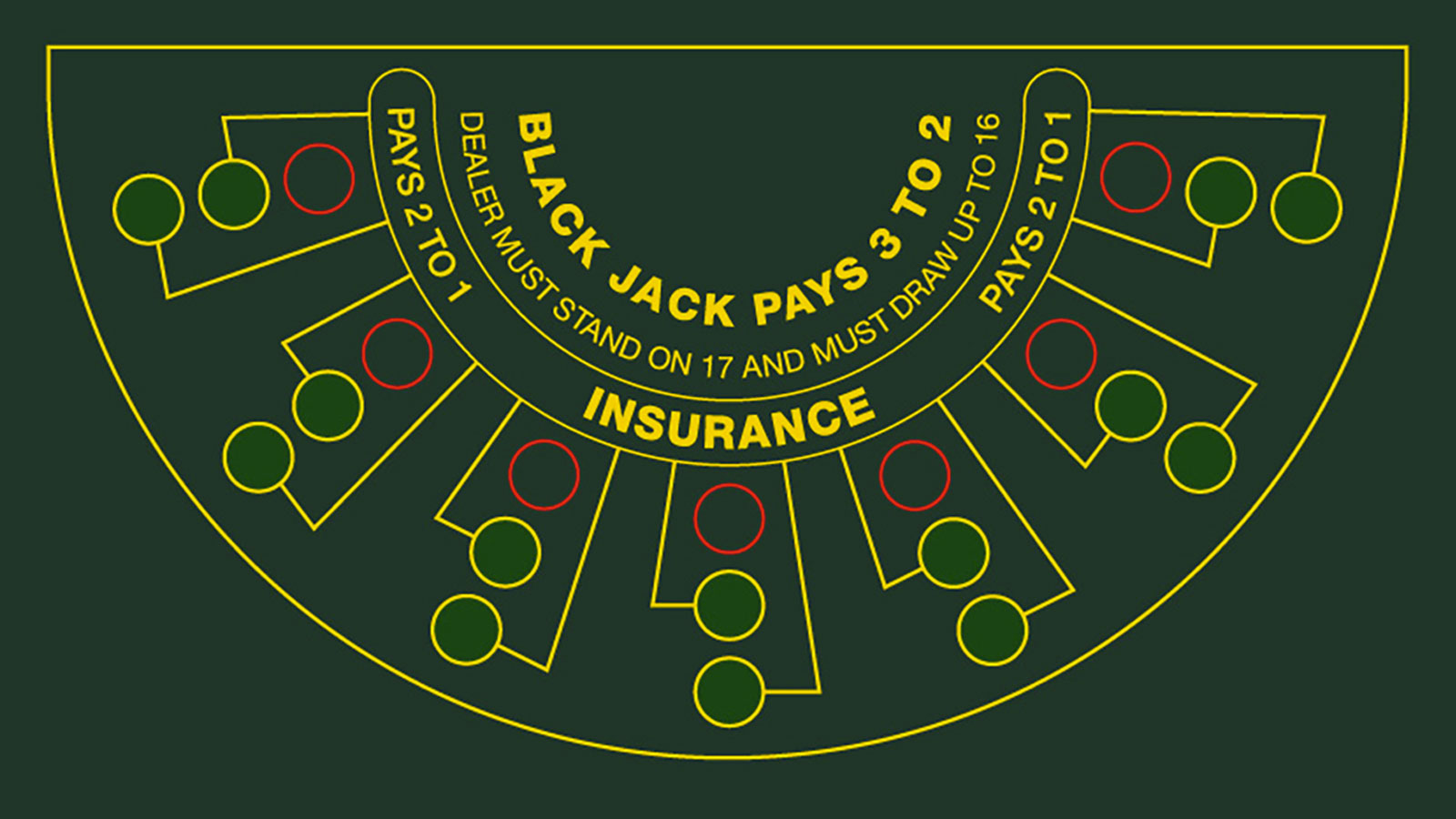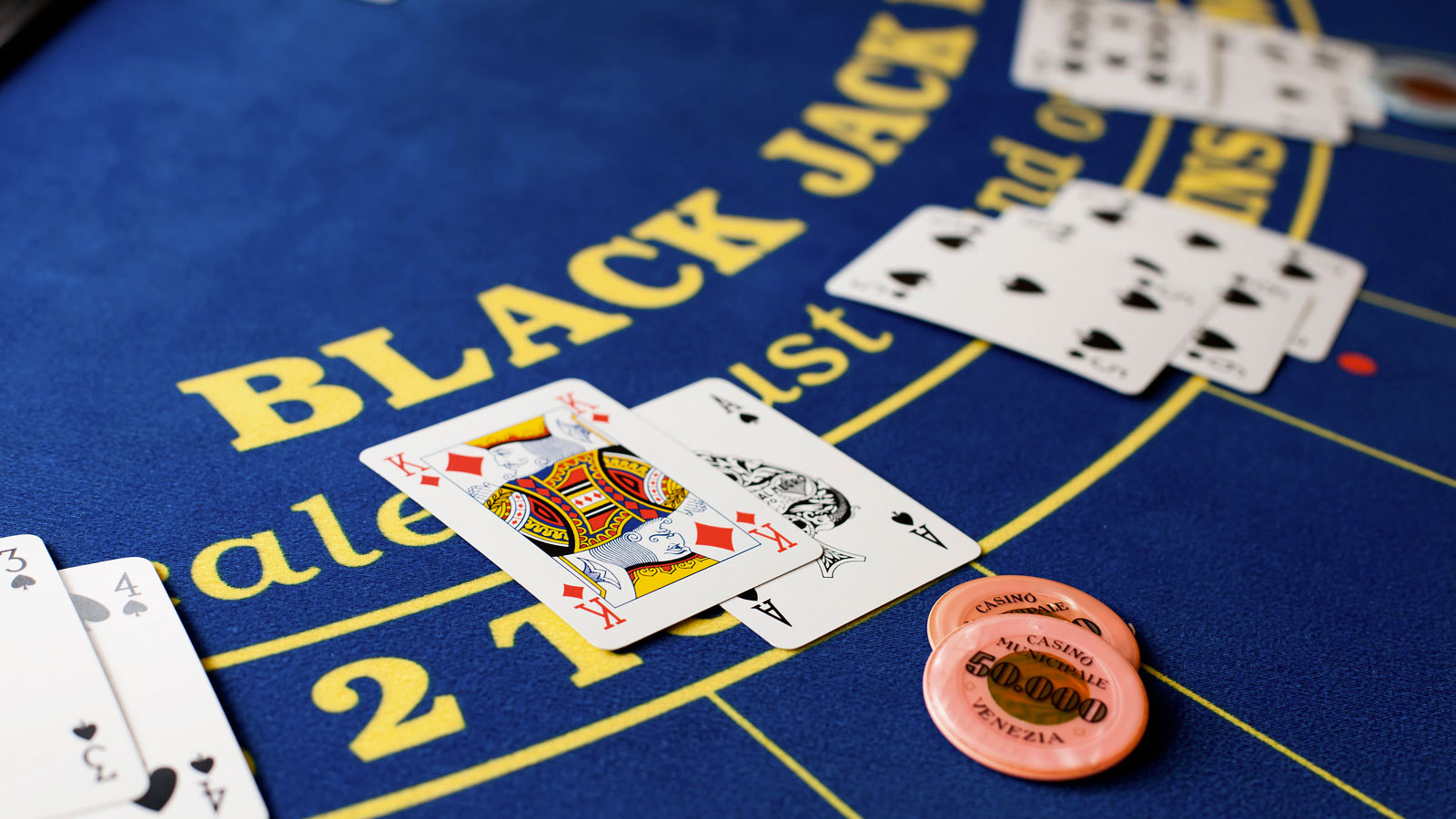BLACK JACK
The game is played between the banker, represented by the Casinò, and the players. The winner is the player with the highest score, not exceeding 21. This is determined by the sum of the values of the card received to begin with, or subsequently requested. Every player plays the game independently, adopting his or her own strategy on each occasion.
Where to play?
Black Jack can be played both at Ca' Vendramin Calergi and Ca' Noghera, the Casinò di Venezia’s two venues, in rooms dedicated to this game.

In Black Jack six decks of fifty-two playing cards are used, with thirteen cards for each of the four suits (Hearts- Diamonds-Clubs-Spades) that consist of: an Ace, nine number cards from 2 to 10, a Jack, a Queen and a King. The Ace counts as either 1 or 11 points, at the player’s discretion, the picture cards are worth 10 points and the value of the other cards is their own number.
The game is played on a semicircular table. The Dealer sits on one side and in front of him sit up to seven players. Each player’s place on the table has three circles drawn on it, so in fact up to twenty-one customers can participate (seven seated and fourteen standing up).
The players who are sitting down place their bets in the first circle (the red circle nearest the Dealer) to become box holders.
Their choices decide the bets placed by the other players in the other circles. These other players cannot influence or interfere with the decisions of the box holders.
All bets must be placed before the Dealer announces “Rien ne va plus” and deals the first card from the sabot. So after this announcement no bets can be added, moved or removed.
The banker then deals from left to right one card face up to each of the boxes in the game and one card to the bank. A second card is then dealt face up to each of the boxes, in the same order as before, but a second card is not yet dealt to the bank.
After the customer has looked at their cards they can choose whether to “stick” or “continue” the game observing a number of simple rules, including: when the score reached is less or the same as 11 the player must ask for another card; when a player’s score reaches 21 they may not ask for another card; in all other situations customers can ask for cards as they wish. If, however, the score exceeds 21, the player’s hand “busts” and exits the game.
Starting from the left the Dealer passes from one box to the next, reading the scores and asking each box holder what they wish to do. The box holders must reply clearly “card” or “no card”.
When everyone has played their hand, the Dealer plays his, observing the “bank regulations” including: when the score reached is less or the same as 16 the bank must ask for another card; if the bank scores 17 or above they must “stick”. If the bank “busts” i.e., his score exceeds 21 then the bank’s hand loses and he must pay all the bets still on the table.
Having compared the scores of the hands on the table with his own, the Dealer proceeds from right to left, box by box, paying out the bets on hands that beat his own, raking in the bets laid on hands with a lower score and leaving on the table any bets placed on an equal score. For winning hands the bank pays evens.
Players who are dealt an initial hand of an Ace and a picture card or a 10, score “Black Jack”, a combination that wins over a hand scoring 21 with more than two cards and is paid 3 to 2. If the bank also scores “Black Jack” the two hands draw. The Ace in a “Black Jack” score is always worth 11 points so the player cannot ask for other cards.
DOUBLE-DOWN
Having received the first two cards, regardless of the score, the box-holder can decide to double the bet laid previously. In this case, the Dealer places the new bet on top of the old one and deals the box-holder one card only at right angles to the first two cards. The other players with bets on this box are not obliged to double their stake, but they do have to accept being dealt one card only.
SPLITTING
If the first two cards dealt to the player have the same value (e.g. two 3s, two Jacks, a King and a 10 etc.) the box holder may Split them and continue the game with two separate hands. The Dealer places the two cards next to each other and the customer lays next to their original stake a second bet of the same amount. If the third card dealt is the same again, the player can split once more. Laying down a third bet of the same amount as the original one.
If the box holder splits two picture cards, two 10s, or a picture card and a 10 and then receives an ace, they can decide whether the card is worth 1 or 11. If they opt for 1, making a score of 11 points, they can ask for one or more cards or the stake can be doubled.
SPLITTING 2 ACES
If the player splits 2 Aces the Dealer deals one card only, at right angles, to each of them and the hand stops there. If the card dealt is a 10 or a picture card, the score is not “Black Jack” but simply “21”. If the box holder decides to split the other players must respect their decision.
INSURANCE
If the Dealer deals the bank an Ace as the first card, the players can bet on the chances of the bank scoring “Black Jack”. This choice is called “Insurance”. Players are free to bet or not to bet and their decision is in no way bound to the actions of box holders.
Players who wish to be “Insured” must place on the line marked “Insurance”, in front of their box, a stake worth at least half the value of their original bet. If the Dealer scores “Black Jack” the “Insurances” are paid at 2 to 1 (any other “Black Jacks” cannot be insured and therefore draw) whereas all the other stakes lose. If, however, the Dealer does not make “Black Jack” the insurances lose and are withdrawn by the Dealer who then completes normal bank operations passing from one box to the next.
EVENS BLACK JACK
When the Dealer’s first card is an Ace, a picture card or a 10, every player who has a “Black Jack” hand, even if they are not box holders, can ask for immediate payment and receive a sum equal to the stake they have laid.
• Box holders can only make decisions on one box. If, however, there are vacant boxes they can decide and play momentarily on these ones too. If the boxes are occupied, however, they lose this right.
• Players must not touch the cards for any reason whatsoever.
• If a stake is laid that is less than the minimum table limit, and the first card is dealt to the first box, the stake can no longer be raised and will therefore be accepted as valid for that hand.
• In the case of a stake being doubled, if the customer lays down a sum that is less than the original stake and the card is dealt, the stake can no longer be raised and will therefore be accepted as valid, and payments will be made on the basis of the stake laid. If, on the other hand, the customer lays down a sum that is higher than the original stake, the sum exceeding the original stake will not be paid and if the hand loses it will be returned to the player.
• Only those playing may sit at the table. If there is only one customer at the table, to play “alone against the bank” the player must bet on at least two boxes.
• The minimum and maximum stakes are indicated on the individual tables using appropriate signs. These limits are applied strictly and players may not exceed them, or use third parties to exceed them. Any excess wins made by surpassing the maximum limit will not be paid and the difference in the stake will be returned to the customer.
• Any dispute that may arise will be settled without right of appeal by the Gaming Managemen

